|
|
|
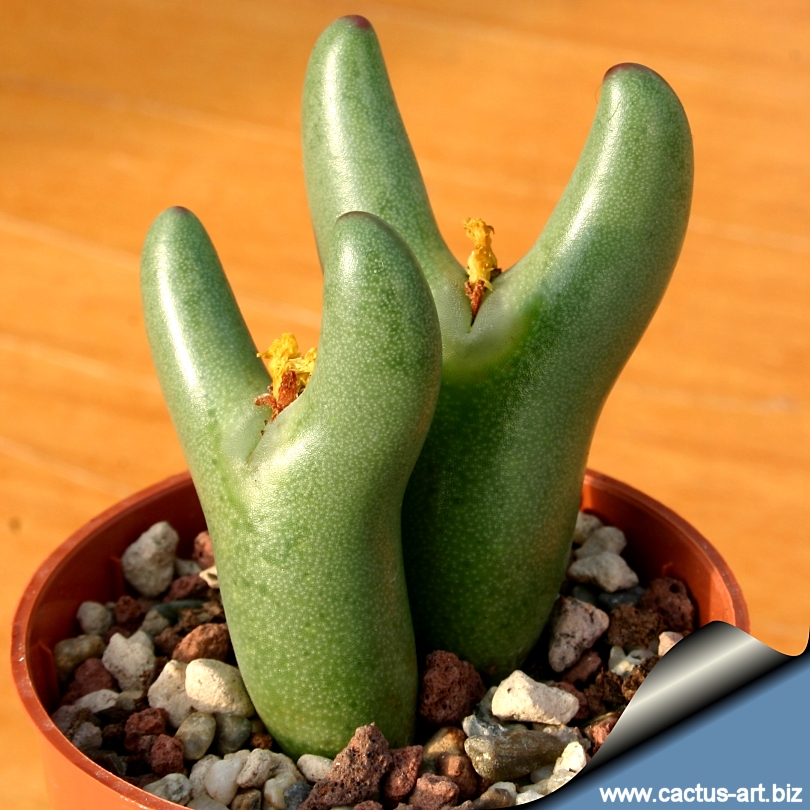
C. bilobum is a common and easy to grow Cono, with yellow flowers. The
easiest of all to grow.
|
|
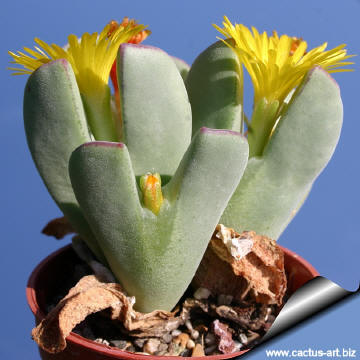
Conophytum chrystansenianum (C. bilobum) |
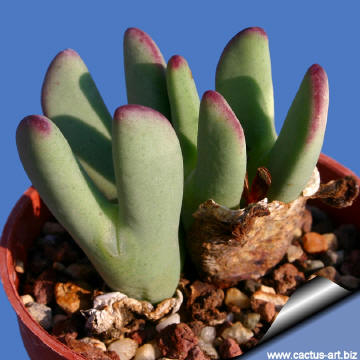
Conophytum bilobum LAV8846 Soebatsfontein. |
|
. |
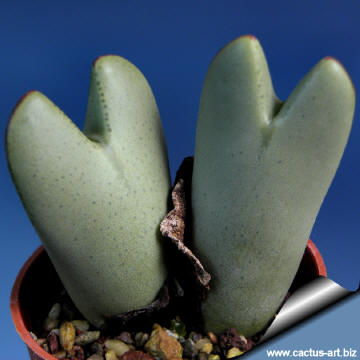
Conophytum meyerae SB787 (C. bilobum)
|
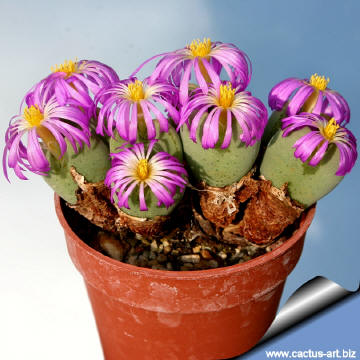
Conophytum cordatum (C). bilobum |
|
Photo of conspecific
taxa, varieties, forms and cultivars of to
the Conophytum bilobum
complex (This
Taxon has lots of synonyms ( like
many other Conophytum) whit several controversial varieties and
subspecies and comprises a multitude of different forms, but where each
form is linked to others by populations of plants with intermediate
characteristics):
|
|


Advertising
|
|
|
|
|
Family: Mesebrianthemaceae (Aizoaceae)
Scientific name: Conophytum
bilobum, (Marloth) Nicholas Edward Brown 1922
BILOBA GROUP
Origin: It is found in the western part of South
Africa (Northern Cape, from Wallekraal in the Sandveld to Swartpoort
near the Orange River and Little Namaqualand)
Habitat: Growing in a well drained
soil with some water in winter and some sun.
Etymology: These plants are named for the
distinctive two lobed bodies. (from Latin bi = "two,
twice" and Greek λοβος
= "lobe of the ear")
Synonyms:
- Mesembryanthemum bilobum Marloth
1907
- Conophytum cordatum Schick &
Tischer 1927.
- Conophytum auctum forma forma auctum
N.E.Br.
- Conophytum gregale N.E.Br.
- Conophytum curtum L.Bolus
- Conophytum incurvum var. incurvum
N.E.Br.
- Conophytum absimile L.Bolus
var. major L.Bolus
|
NOTE: This plant is one of the most widespread and
morphologically variable taxon of the genus. Many of its
morphological and geographical variant was early classified as different
independent species, but nowadays all this plant are considered part of
a multiform species, where each form is linked to
others by populations of plants with intermediate characteristics.
Description: Robust caespitose (groundcover) plant, stemless
or with short stems with time.
Size: Thickness: 3 centimetres Height: 7 centimetres
Profile: The leaf-tips (lobes) are free and are 10
mm long and triangular in shape and keeled
Colours: The margins are green to red or deep purple in colour.
The epidermis is glabrous to velvety or quite
asperulous, it is whitish-green to glaucous to deep blue green or
brownish pink in colour. The epidermis could be heavily spotted or
completey smooth.
Flower: Scentless up to 3 cm (The largest of the genus)
Blooming season: The flowers are autumnal (rarely in summer) and
diurnal.
|
|
|
|
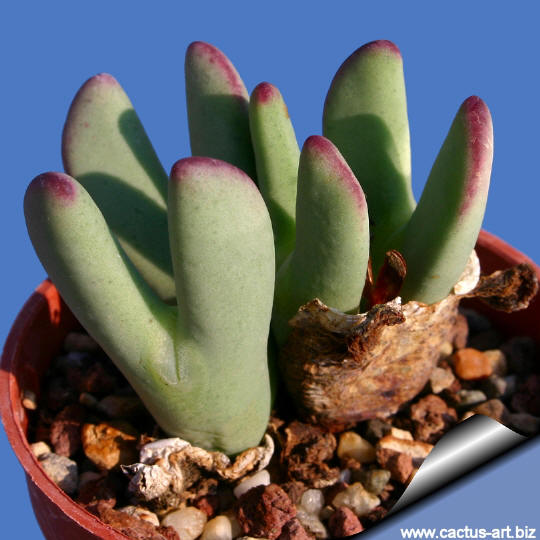
Conophytum bilobum LAV8846 Soebatsfontein.
Cultivation: C. bilobum is easy to grow. These plants grow
on winter rain and head for summer dormancy. They require little
water; otherwise its epidermis breaks (resulting in unsightly scars).
Water minimally in summer, (only when the plant starts shrivelling), but
it
will generally grow even in summer if given water.
Water
regularly in winter after the previous year's
leaves have dried up. Requires good drainage. Keep
cool and shaded in summer, it needs
full sun or light shade. Hardy to -2°C.
Ensure a very good ventilation. Avoid to repot
frequently. This plant may stay in the same pot for many years.
Propagation: It can be
reproduced both by cuttings and seeds. Take the cutting from a grown-up
mother plant. Each cutting must contain one or more heads along with a
fraction of root.
CONOPHYTUMS: Plants of the genus Conophytum are also
known as 'living pebbles'. During the rest period (the summer
months in Europe) a new body forms inside the old, gradually taking all
the substances from it until all that remains is the skin, which dries
and protects the young plant from the heat of the sun and excess
evaporation of water. The resting Conophytum protected by this dry cover
resembles a pebble and hence the name 'living pebble'. The growth
period of most species is from August to March. The temperature should
be about 10 to 12°C
|
|